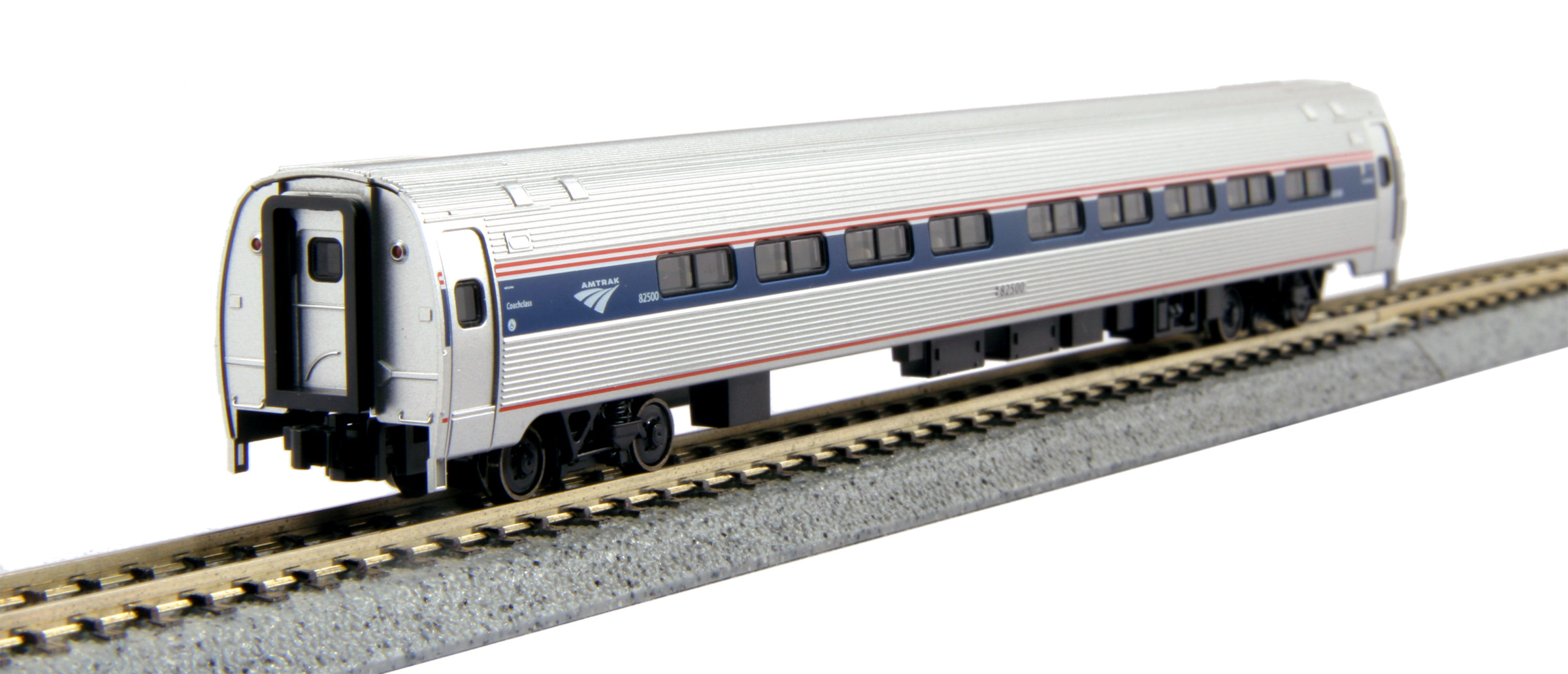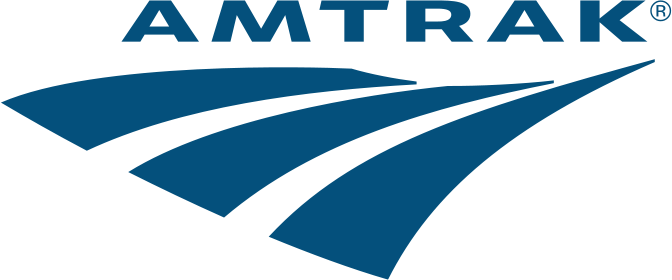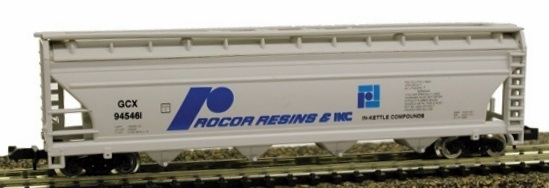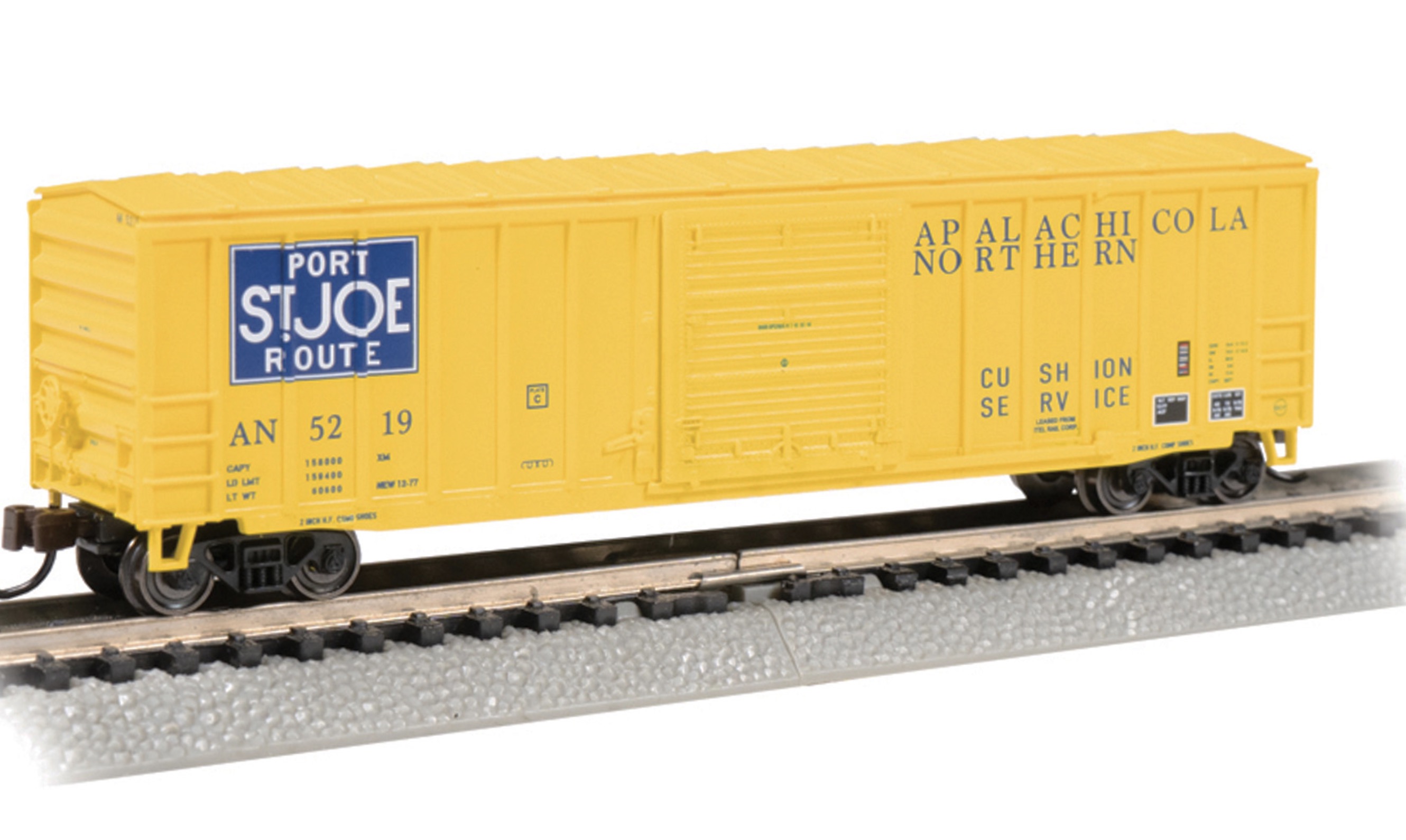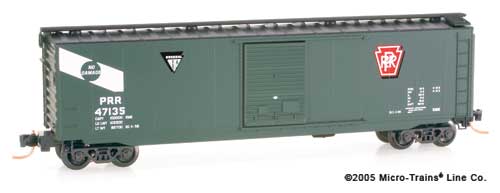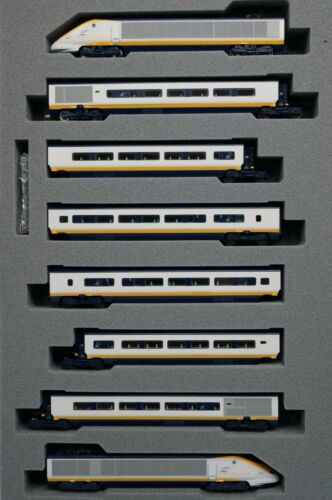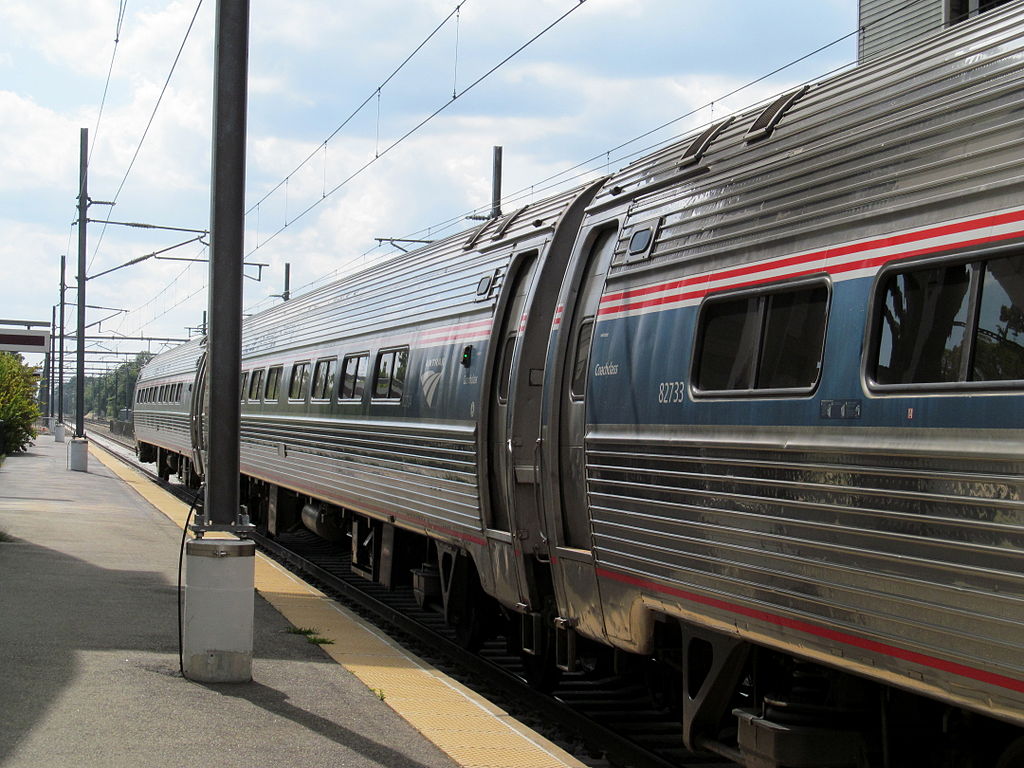Model Information: Amfleet is a fleet of single-level intercity railroad passenger cars built by the Budd Company for Amtrak in the late 1970s and early 1980s. Budd based the Amfleet design on its earlier Metroliner electric multiple unit. They were the first new locomotive-hauled cars ordered by Amtrak. As of 2015, Amfleet cars are used extensively in the eastern and mid-western United States, forming the backbone of Amtrak's single-level fleet.
Prototype History: Amfleet is a fleet of single-level intercity railroad passenger cars built by the Budd Company for American company Amtrak in the late 1970s and early 1980s. Budd based the Amfleet design on its earlier Metroliner electric multiple unit. An initial order for 57 cars in 1973 to supplement the Metroliners on the Northeast Corridor grew to two orders totaling 642 cars, sufficient to reequip all the services on the Northeast Corridor and many other routes around the United States. The first 492 cars, known as Amfleet I and completed between 1975–1977, were designed for short-distance service. A second order of 150 cars, known as Amfleet II and completed between 1980–1983, were designed for long-distance service. They were the last intercity passenger cars built by Budd.
Car types include both long- and short-distance coaches, cafes, club cars, and lounges. Since the construction of the cars multiple rebuildings have eliminated the club cars and lounges in favor of business class cars, club-dinettes, and "diner-lite" dining cars. Amtrak experimented with sleeping car conversions in the 1970s but did not pursue the idea. The Amfleet I has vestibules on both ends of the car for faster unloading, while the Amfleet II has a single vestibule. The Amfleet II also has slightly larger windows.
The Amfleets were the first new locomotive-hauled intercity cars ordered by Amtrak and the first such cars built in the United States since 1965. Their introduction in the mid-1970s led to improved reliability for Amtrak's trains and ridership gains. As of 2015, Amfleet cars are used extensively in the eastern and mid-western United States, forming the backbone of Amtrak's single-level fleet.
From Wikipedia
Car types include both long- and short-distance coaches, cafes, club cars, and lounges. Since the construction of the cars multiple rebuildings have eliminated the club cars and lounges in favor of business class cars, club-dinettes, and "diner-lite" dining cars. Amtrak experimented with sleeping car conversions in the 1970s but did not pursue the idea. The Amfleet I has vestibules on both ends of the car for faster unloading, while the Amfleet II has a single vestibule. The Amfleet II also has slightly larger windows.
The Amfleets were the first new locomotive-hauled intercity cars ordered by Amtrak and the first such cars built in the United States since 1965. Their introduction in the mid-1970s led to improved reliability for Amtrak's trains and ridership gains. As of 2015, Amfleet cars are used extensively in the eastern and mid-western United States, forming the backbone of Amtrak's single-level fleet.
From Wikipedia
Road Name History: The National Railroad Passenger Corporation, doing business as Amtrak, is a passenger railroad service that provides medium- and long-distance intercity service in the contiguous United States. Founded in 1971 through the government-sponsored consolidation of most of the remaining U.S. passenger rail companies, it is partially government-funded yet operated and managed as a for-profit corporation.
Amtrak operates more than 300 trains each day on 21,300 miles (34,000 km) of track with select segments having civil operating speeds of 150 mph (240 km/h) and connecting more than 500 destinations in 46 states in addition to three Canadian provinces. In fiscal year 2015, Amtrak served 30.8 million passengers and had $2.185 billion in revenue, while employing more than 20,000 people. Nearly two-thirds of passengers come from the 10 largest metropolitan areas; 83% of passengers travel on routes shorter than 400 miles. Its headquarters is at Union Station in Washington, D.C.
The name "Amtrak" is a portmanteau of the words "America" and "trak", the latter itself a sensational spelling of "track".
Read more on Wikipedia.
Amtrak operates more than 300 trains each day on 21,300 miles (34,000 km) of track with select segments having civil operating speeds of 150 mph (240 km/h) and connecting more than 500 destinations in 46 states in addition to three Canadian provinces. In fiscal year 2015, Amtrak served 30.8 million passengers and had $2.185 billion in revenue, while employing more than 20,000 people. Nearly two-thirds of passengers come from the 10 largest metropolitan areas; 83% of passengers travel on routes shorter than 400 miles. Its headquarters is at Union Station in Washington, D.C.
The name "Amtrak" is a portmanteau of the words "America" and "trak", the latter itself a sensational spelling of "track".
Read more on Wikipedia.
Brand/Importer Information: KATO U.S.A. was established in 1986, with the first U.S. locomotive model (the GP38-2, in N-Scale) released in 1987. Since that time, KATO has come to be known as one of the leading manufacturers of precision railroad products for the modeling community. KATO's parent company, Sekisui Kinzoku Co., Ltd., is headquartered in Tokyo, Japan.
In addition to producing ready-to-run HO and N scale models that are universally hailed for their high level of detail, craftsmanship and operation, KATO also manufactures UNITRACK. UNITRACK is the finest rail & roadbed modular track system available to modelers today. With the track and roadbed integrated into a single piece, UNITRACK features a nickel-silver rail and a realistic-looking roadbed. Patented UNIJOINERS allow sections to be snapped together quickly and securely, time after time if necessary.
The Kato U.S.A. office and warehouse facility is located in Schaumburg, Illinois, approximately 30 miles northwest of Chicago. All research & development of new North American products is performed here, in addition to the sales and distribution of merchandise to a vast network of wholesale representatives and retail dealers. Models requiring service sent in by hobbyists are usually attended to at this location as well. The manufacturing of all KATO products is performed in Japan.
Supporters of KATO should note that there is currently no showroom or operating exhibit of models at the Schaumburg facility. Furthermore, model parts are the only merchandise sold directly to consumers. (Please view the Parts Catalog of this website for more specific information.)
In addition to producing ready-to-run HO and N scale models that are universally hailed for their high level of detail, craftsmanship and operation, KATO also manufactures UNITRACK. UNITRACK is the finest rail & roadbed modular track system available to modelers today. With the track and roadbed integrated into a single piece, UNITRACK features a nickel-silver rail and a realistic-looking roadbed. Patented UNIJOINERS allow sections to be snapped together quickly and securely, time after time if necessary.
The Kato U.S.A. office and warehouse facility is located in Schaumburg, Illinois, approximately 30 miles northwest of Chicago. All research & development of new North American products is performed here, in addition to the sales and distribution of merchandise to a vast network of wholesale representatives and retail dealers. Models requiring service sent in by hobbyists are usually attended to at this location as well. The manufacturing of all KATO products is performed in Japan.
Supporters of KATO should note that there is currently no showroom or operating exhibit of models at the Schaumburg facility. Furthermore, model parts are the only merchandise sold directly to consumers. (Please view the Parts Catalog of this website for more specific information.)
Item created by: gdm on 2015-12-11 11:27:30. Last edited by Alain LM on 2020-11-01 10:06:40
If you see errors or missing data in this entry, please feel free to log in and edit it. Anyone with a Gmail account can log in instantly.
If you see errors or missing data in this entry, please feel free to log in and edit it. Anyone with a Gmail account can log in instantly.


